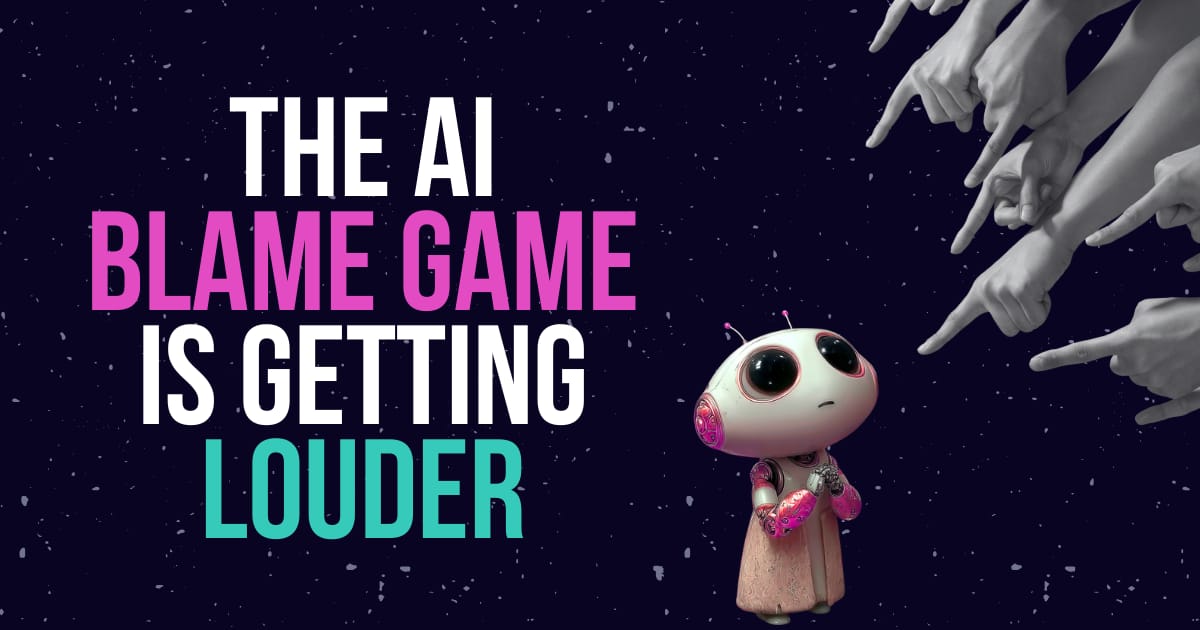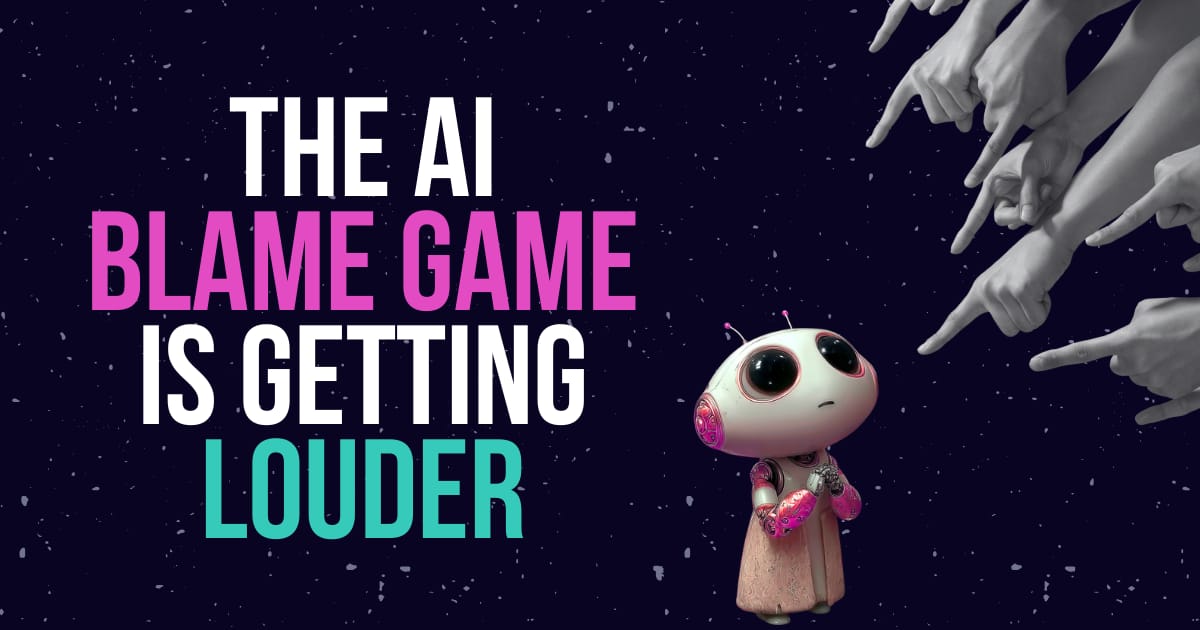- Enterprise AI Daily
- Posts
- White Collars, Pink Slips, and AI Pilots: The New Face of Enterprise Risk
White Collars, Pink Slips, and AI Pilots: The New Face of Enterprise Risk
As execs trim the fat (and then some), nations start training the next AI-native workforce, plus how to spot AI-generated video and the Getty lawsuit breakdown

Remember how AI was supposed to augment human workers, not replace them? Well, corporate America apparently missed that memo. Today brings sobering news about white-collar layoffs that are reshaping the enterprise landscape faster than you can say "digital transformation."
Today we're unpacking how 60,000+ job cuts reveal the messy reality of AI adoption, why Iceland is betting big on Claude in classrooms, and what happens when copyright law meets generative AI in British court. Let's dig in.

Enterprise AI Group
The Great White-Collar Reckoning
Corporate giants Amazon, UPS, and Target have collectively eliminated over 60,000 jobs this year, and they're all pointing to AI as either the culprit or the catalyst. Corporate earnings calls are now peppered with phrases like “productivity gains,” “rightsizing,” and “AI leverage,” often followed closely by a drop in headcount buy the thousands.
But the truth is far more nuanced than "robots took our jobs." Unlike previous waves of automation, this one isn’t hitting warehouses and call centers. Instead, it’s going after analysts, marketers, middle managers, and junior executives.
Amazon recently announced plans to cut approximately 14,000 white-collar jobs globally, with executives describing it as a structural adjustment in response to AI adoption. UPS eliminated 14,000 managerial positions over 22 months, though the company says technology was not the primary driver. Target's adding another 1,800 corporate cuts to the pile.
What's actually happening? It looks like there’s three forces are colliding:
1. There's Genuine AI Displacement
Salesforce CEO Marc Benioff openly stated his company cut customer support roles from 9,000 to 5,000, crediting AI with handling 50% of the company's workload. Klarna shrunk its headcount by 40% partly due to AI adoption. These aren't theoretical efficiency gains.
2. We're Seeing Strategic "AI-washing" of Traditional Cost-cutting.
One finance professor noted that some layoffs framed as AI transformation are more about signaling discipline to shareholders than reflecting genuine technological necessity. When everyone else is cutting, companies feel pressure to show they're "doing something" too.
3. There’s the Forward-looking Hiring Freeze.
UPS revealed that while current layoffs weren't primarily AI-driven, future hiring plans will be dramatically impacted as automation reduces the need for new workers.
These cuts are happening during robust profitability, not economic downturns. Companies aren't struggling; they're optimizing. And white-collar workers who thought their degrees protected them are discovering that computer science graduates now face 6.1% unemployment, nearly double that of philosophy majors.
For leaders, this creates a fascinating dilemma. The same technology promising competitive advantage also threatens organizational stability. How do you maintain innovation culture when your workforce fears obsolescence? How do you retain institutional knowledge while automating processes?
The companies navigating this best aren't the ones making dramatic cuts. They're upskilling teams, creating new AI-adjacent roles, and being transparent about which functions will evolve versus disappear. Because at the end of the day, cutting without a clear value creation strategy is just expensive theater.

Enterprise AI Group // Created with Midjourney
More AI News
1. Iceland Launches National AI Education Pilot with Anthropic
Anthropic and Iceland just kicked off one of the world’s first country-wide AI upskilling efforts. Students will learn how to use Claude in classrooms, bridging the gap between generative AI and national competitiveness.
Read more → Anthropic
2. That Video You’re Watching Might Be AI
BBC Future breaks down the subtle giveaways of AI-generated video, from unnatural eye movement to physics-defying hair. In an era of AI news anchors and synthetic influencers, this literacy is becoming mission-critical.
Read more → BBC Future
3. Stability AI Faces High Court Over Getty Image Use
Getty Images is dragging Stability AI to court, arguing the company scraped copyrighted images to train models like Stable Diffusion without permission. This case could set a precedent for AI training data legality worldwide.
Read more → The Guardian
TL;DR:
White-collar layoffs are accelerating as enterprises quietly lean on AI to “cut smarter.”
AI is now a national curriculum: Iceland teams up with Anthropic to train the next gen.
Spotting AI-generated video is becoming a critical skill, even for execs.
Getty vs. Stability AI may reshape what’s fair game for model training.
Enterprises need more than copilots, they need upskilling strategies and legal foresight.
We’re in the midst of an operational reckoning. Whether you're designing the future of work or trying to stay off the next reorg spreadsheet, remember: AI strategy isn’t just about tools. It’s about people, positioning, and power.
Stay sharp,
Cat Valverde
Founder, Enterprise AI Solutions
Navigating Tomorrow’s Tech Landscape Together